Year after year, this ferment is the very best side dish on Christmas days. Traditionally, Gstopfta Rumm is served with roast goose, duck or roast pork. Like all fermented foods, it boosts the gut microflora, and thus the digestibility of fatty meat dishes. I also really love this ferment as a stand-alone main dish. Add to this a potato dumpling, half made from raw and half from cooked potatoes, filled with pieces of bread toasted in fat... Delicious!
Gstopfta Rumm is a Franconian tradition from Wallenfels
Wallenfels is a village in the region of Oberes Rodachtal, a nationally recognized recreational area, and is best known for its rafting. The valley of the Wild Rodach, which flows through Wallenfels, is located in the upper Franconian Forest, a low mountain range with a large proportion of forest. Not much can be cultivated here, except for sturdy vegetables, such as turnips and cabbage.
To preserve the harvested vegetables, the Rumm (Franconian dialect for rutabaga) were created from a mixture of rutabaga or swedes, white cabbage, carrots, savoy cabbage and leeks. After the harvest in autumn, the ingredients are chopped and stuffed along with salt into fermentation vessels. Gstopfta Rumm translates to stuffed rutabaga, by the way.
Gstopfta Rumm, the former poor man's food, known only in the small town of Wallenfels in the Franconian Forest, has become, like many other dishes with rutabaga, a culinary delicacy and also a culinary winter highlight for me.
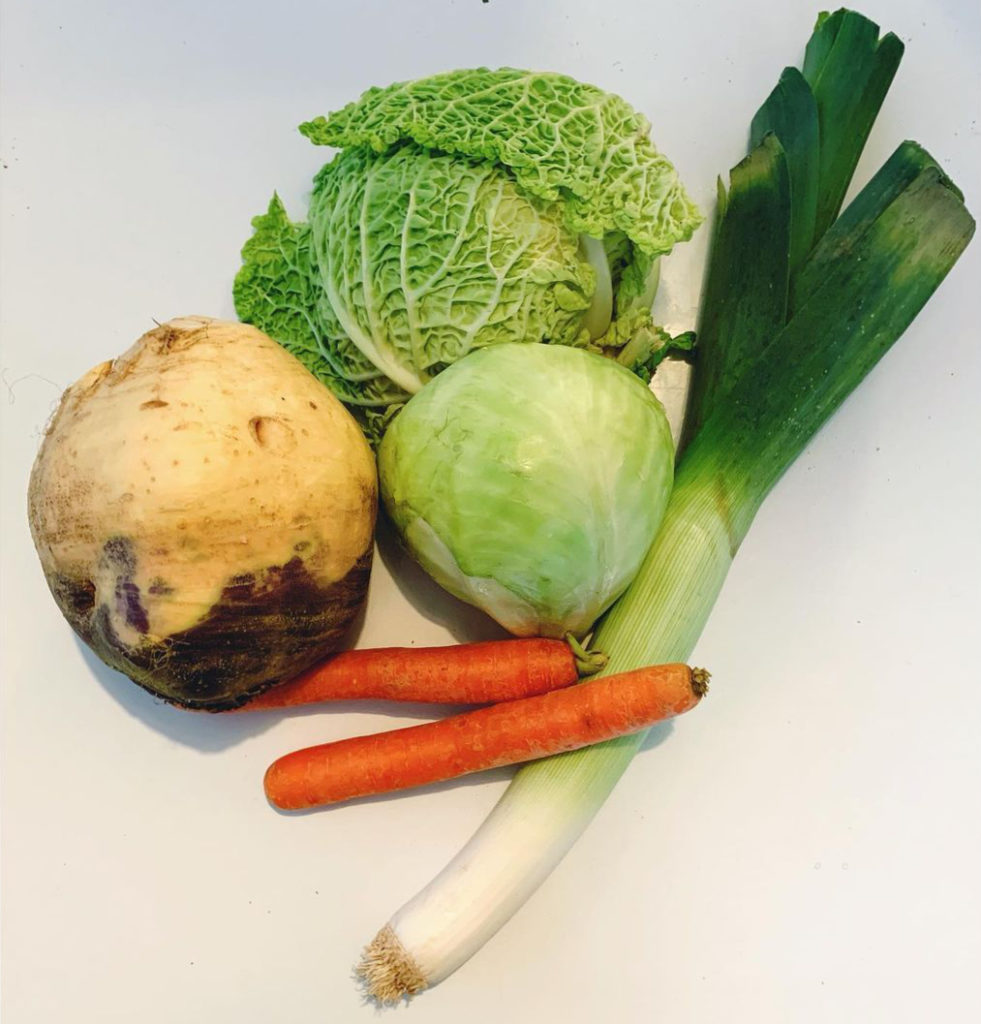
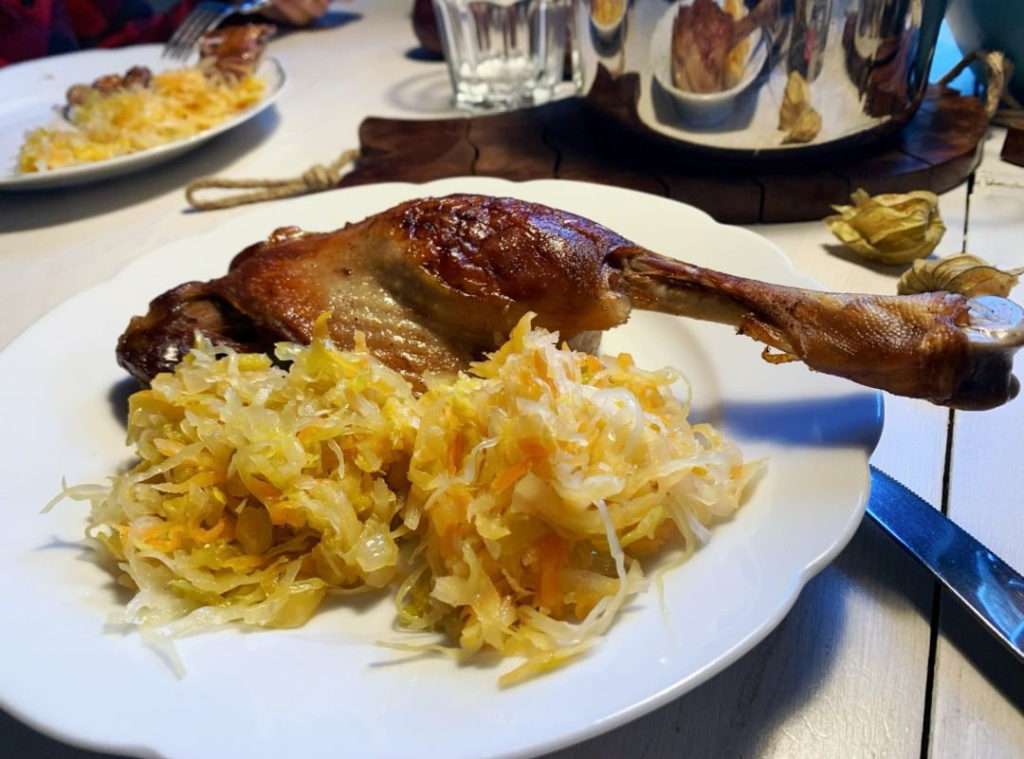
INGREDIENTS
- 200 gr. rutabaga (about ¼ turnip)
- 270 gr. savoy cabbage ( about ½ head for a small cabbage)
- 270 gr. white cabbage (½ small cabbage)
- 120 gr. carrots (2 medium)
- 120 gr. leek (½ stalk)
- 20 gr. salt (about 2% of the amount of vegetables)
By the way, it is not important to weigh to the gram. A little more cabbage and a little less carrots and leeks than rutabaga is my favorite ratio of vegetables to each other.
PREPARATION
Cut the vegetables into very small cubes. This works best if you first dice them a little coarser, approx. 1-2 cm large pieces, which you then chop further on a board with a chopping knife or hatchet until they measure approx. 3mm.
I tried it once with the food processor because I wanted to save time. I did not like the result, I prefer to make this ferment by hand. Of course, you can decide for yourself to use the food processor - after all, my opinion is not valid for everyone.
Chopping by hand is traditional
The manual method of shredding is also the closest to tradition. The coarsely cut vegetables were placed in wooden troughs and laboriously chopped for hours with so-called stuffing knives, cutting tools on long handles.
The small vegetable cubes are now sprinkled with the salt, mixed well and kneaded, so that brine is formed. When filling the fermentation vessels, you must stuff everything well so that no air pockets remain.
PS. In my first attempts I did not chop the vegetables very small, as you can see in some of the photos. The result was also very tasty. So if you want to make less effort, this is the best way.
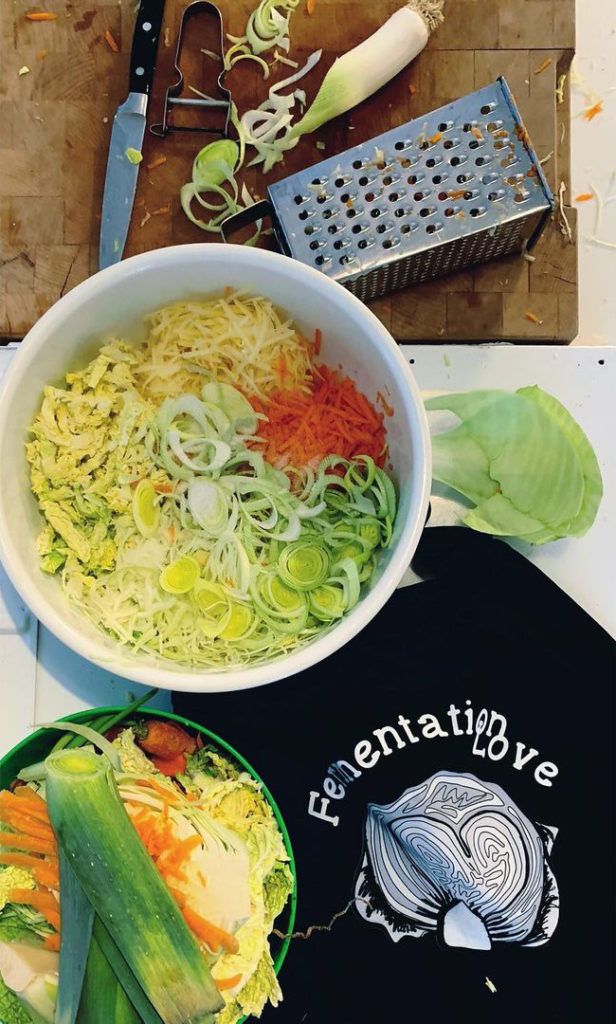
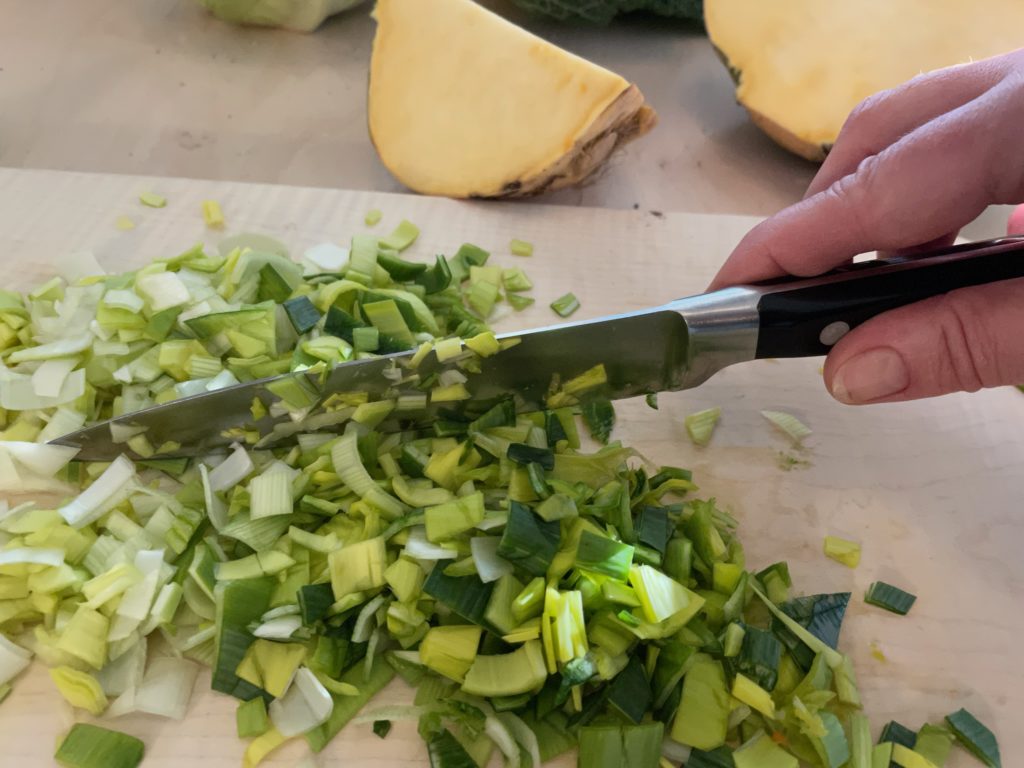
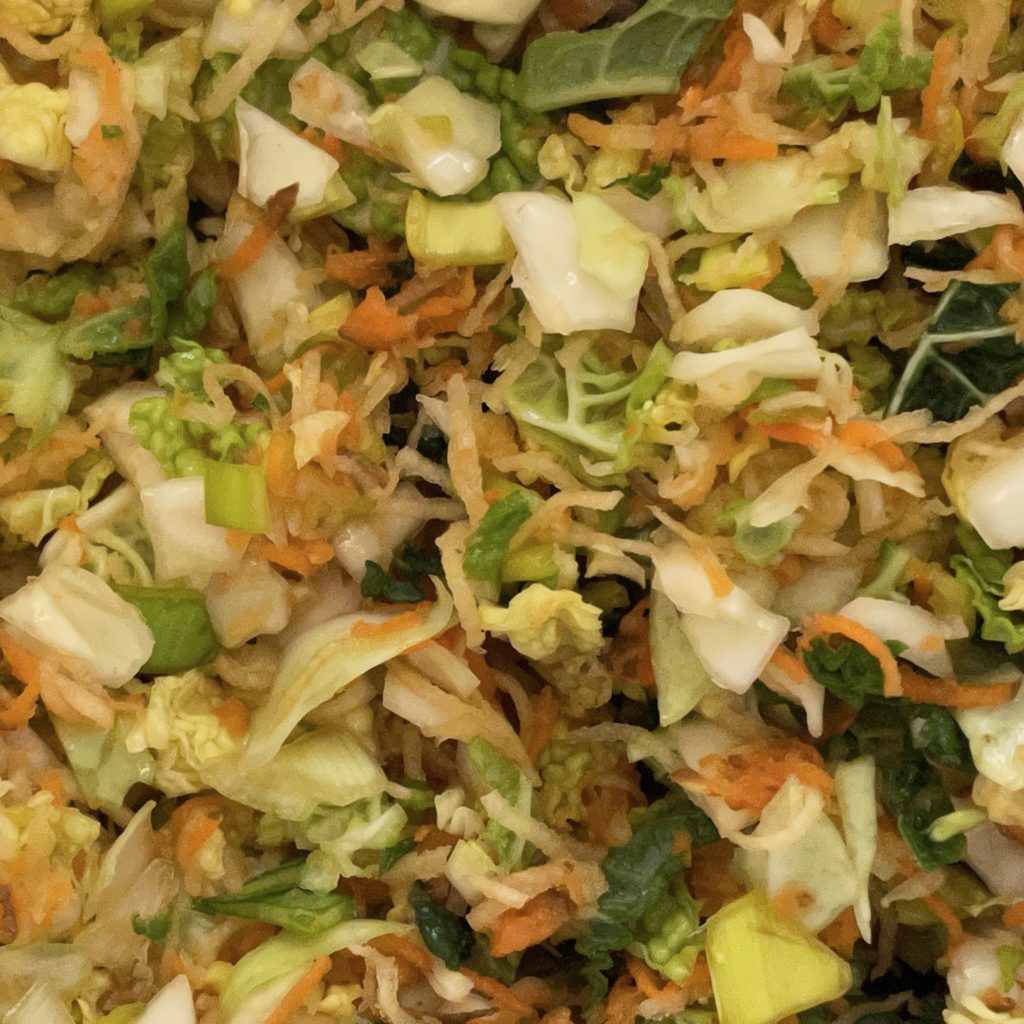
Then weigh down the vegetable pieces so that none of it comes into contact with oxygen during the fermentation process. A white cabbage leaf as a cover is well suited, topped with a few weights. Or you can fill up your jar very high, until there is no space left for oxygen - but this will make a mess when fermentation starts, because the brine will be pressed out of the jar. In that case, at least one bowl should be placed underneath the vessel.
If the brine was not sufficient to completely cover the vegetables and the used coverings, please fill up with water. This does not have to be salty, the minimal reduction in salinity does not bother the vegetables and the fermentation process.
Fermentation time
According to Wallenfels tradition, the Gstopfta Rumm should ferment for three weeks. I personally like them after 6-8 weeks. You can also leave them longer. Fermenting is preserving, they will not go bad.
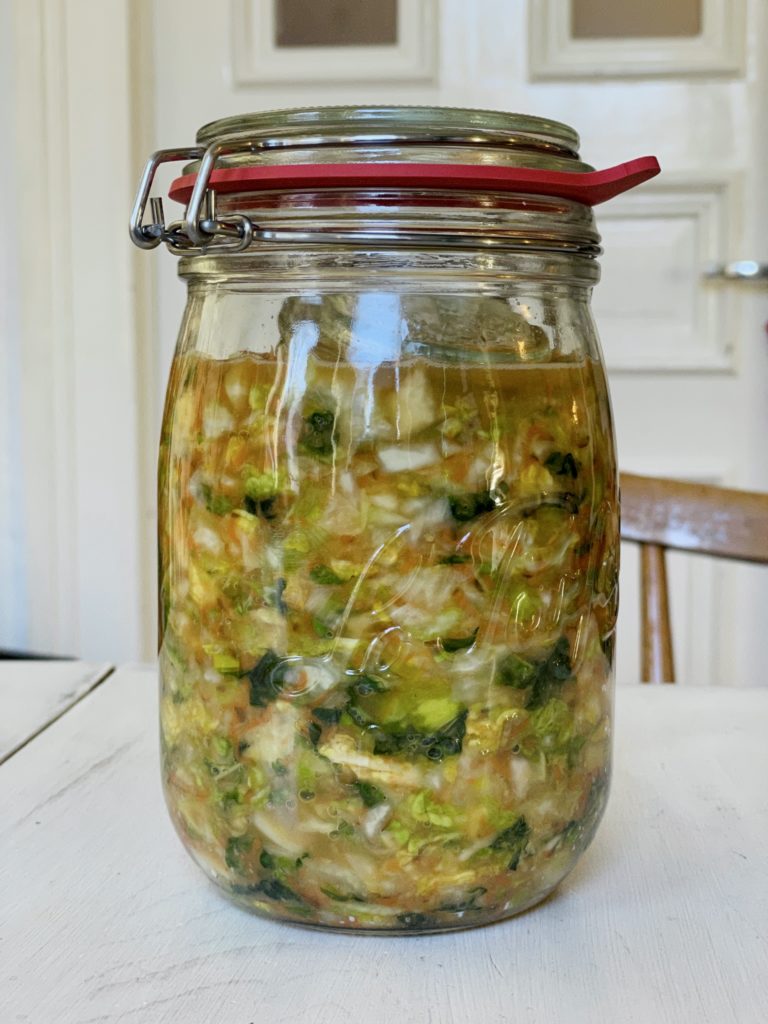
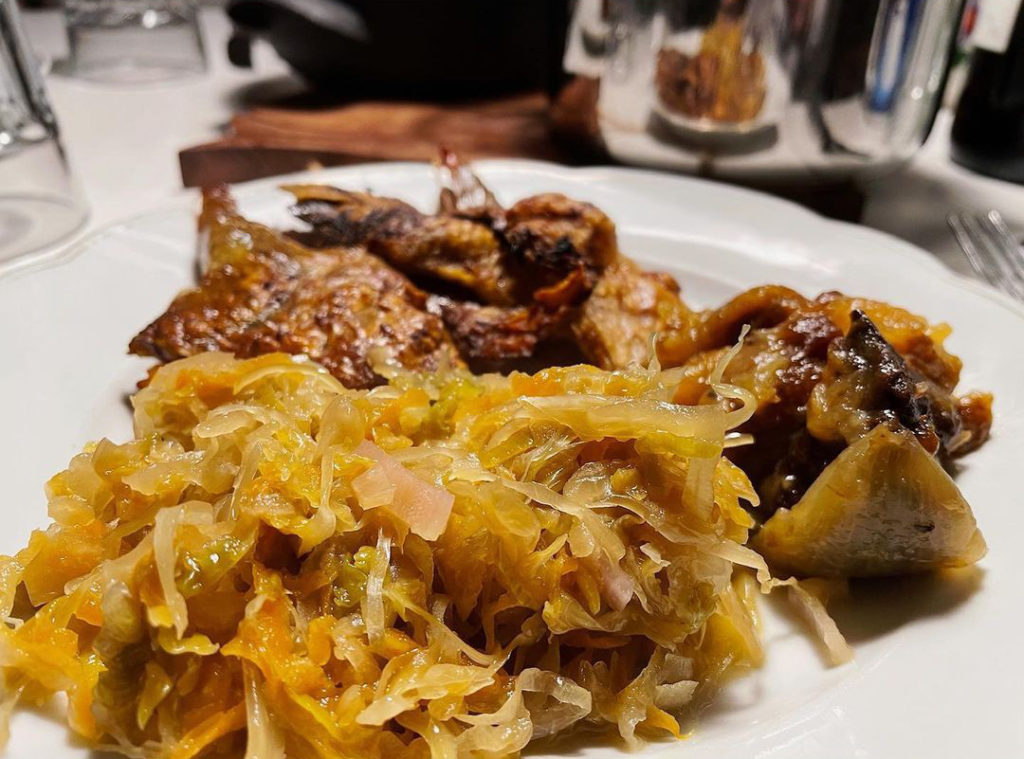
Recipe for Gstopfta Rumm as a side dish
In the traditional preparation, the ferment is boiled for about 30 minutes. Then it is mixed with diced onions, which have been sautéed in lard or butter until glassy, seasoned with sugar, salt and spices and thickened with a little starch. 500 grams are calculated as a side dish per person.
I prepare it a little more gently. Diced onions are sautéed in goose fat or clarified butter and lightly caramelized with sugar. Then I add the ferment and heat it just a bit, until it is a good temperature to eat. Some freshly ground black pepper goes well with it, I don't need salt or other spices. Since you would have to heat it more to thicken it, I usually don't do that either.
Serve with potato dumpling or roast goose.
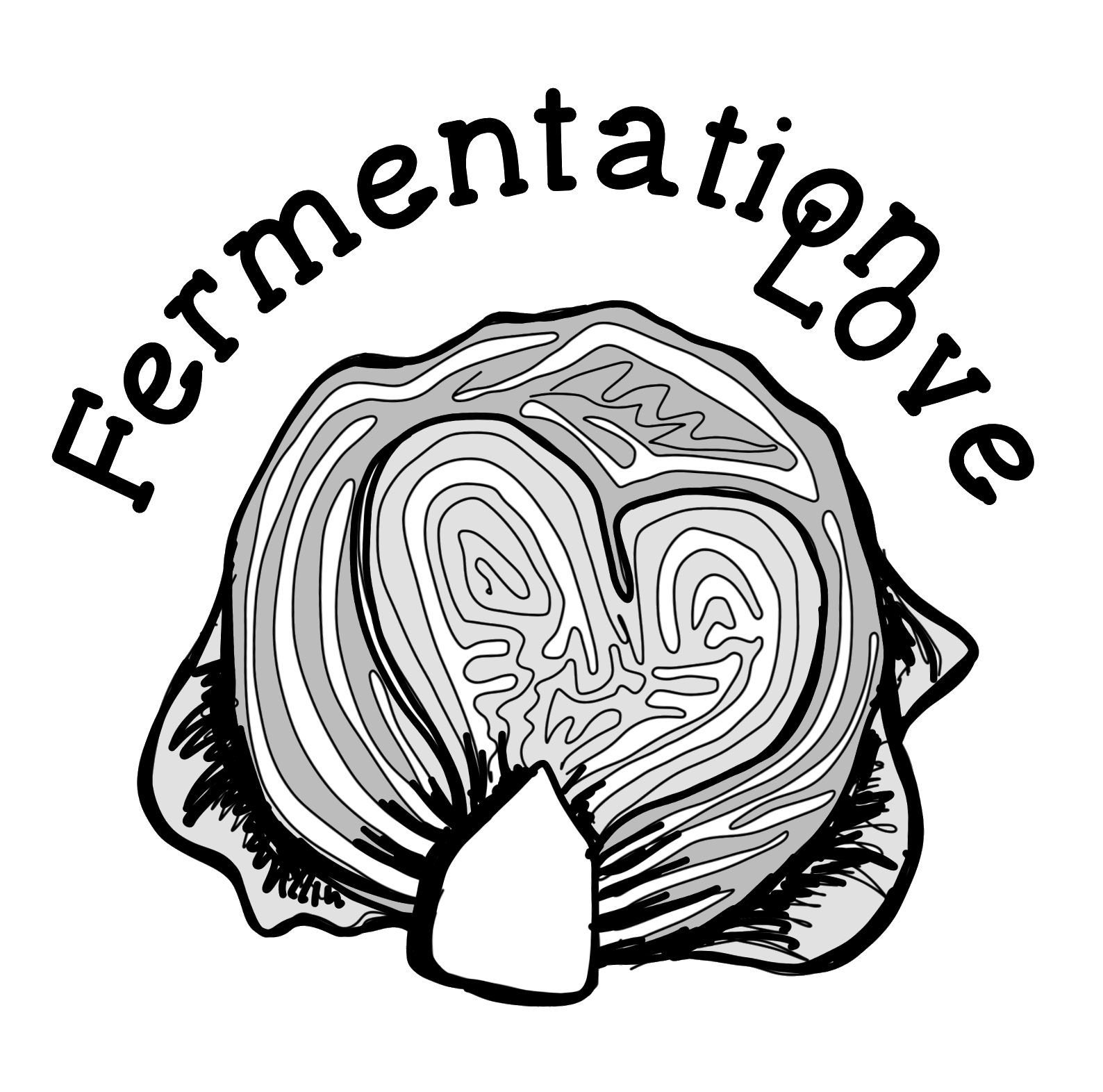
Im Januar zubereitet, und inzwischen auch verzehrt. Wir machen’s wieder. Eine ersten Test haben wir es so zubereitet, wie du empfohlen hast, mit gebratenen Zwiebeln. War lecker, ging schneller als gedacht. Jetzt mische ich es auch unter meine Salate, dann essen wir ganz und gar roh. Sehr lecker und gute Abwechslung zu einer Jahreszeit, in der es wenig frisches regionales Gemüse gibt. Danke
Liebe Beate,
genau so soll es sein! Abwechslung in der Zubereitung und Frische in der gemüsearmen Zeit. Ich freue mich, dass es so gut gelungen ist und schmeckt.
Herzlich,
Katsu